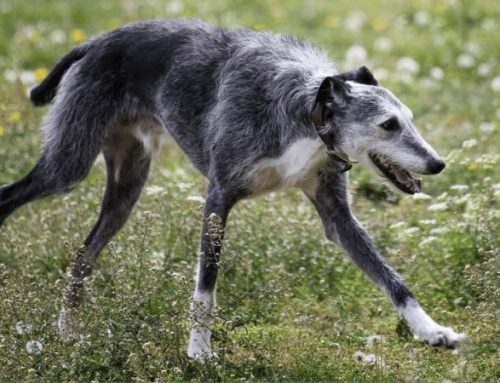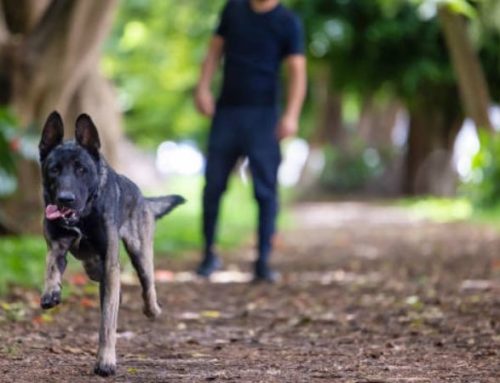Seeing your cat suddenly struggle to move their back legs can be both frightening and confusing. One moment they may be walking normally, and the next, they’re unable to stand or support themselves. Temporary hind leg paralysis doesn’t always mean a permanent condition, but it is a clear signal that something serious is happening.
In this guide from Nexus-Pets, we’ll break down the common causes, key symptoms, and the steps you can take at home to keep your feline friend safe and comfortable.
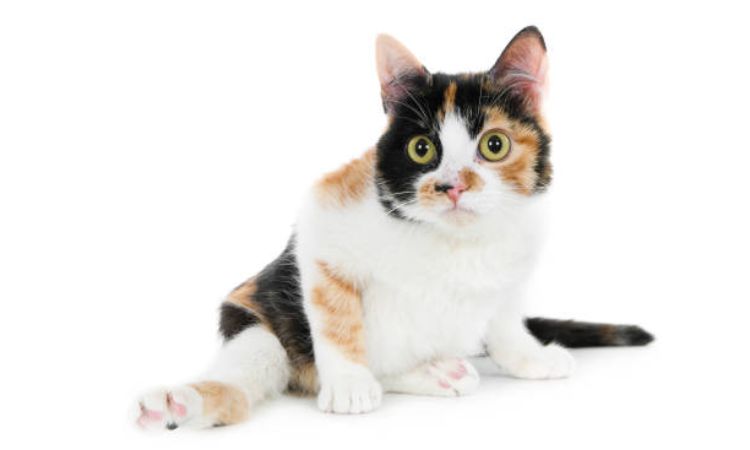
Temporary hind leg paralysis in cats symptoms
When a cat experiences temporary paralysis in its hind legs, the signs can appear suddenly and are often very alarming for owners. Common symptoms include:
- Difficulty walking or dragging the hind legs – Your cat may struggle to support its weight or appear uncoordinated.
- Sudden weakness or collapse – In some cases, the back legs may give out entirely, leading to a sudden fall.
- Pain and vocalization – Many cats cry out, pant, or show obvious distress when the condition is painful, especially if a blood clot is involved.
- Cold back legs – If circulation is blocked (such as with a saddle thrombus), the affected limbs may feel noticeably colder than the rest of the body.
- Loss of bladder or bowel control – In severe cases, cats may urinate or defecate involuntarily.
- Balance and coordination problems – Your cat may wobble, stumble, or be unable to stand steadily.
- Behavioral changes – Hiding, refusing food, or becoming unusually quiet can all signal pain or discomfort.
Because temporary hind leg paralysis can range from mild weakness to complete immobility, it’s important to treat any sudden loss of mobility as an emergency and seek veterinary care right away.
Common Causes of Temporary Hind Leg Paralysis
Temporary paralysis or weakness in a cat’s hind legs can be alarming and often points to an underlying medical condition. Some causes may resolve with prompt treatment, while others indicate life-threatening emergencies requiring immediate veterinary care.
- Blood clots (saddle thrombus): One of the most urgent causes of sudden hind leg paralysis. A blood clot can lodge where the aorta branches into the hind legs, cutting off blood supply. Cats often cry out in pain, show sudden weakness, and their affected limbs may feel cold to the touch. This is a true emergency.
- Spinal cord injuries or trauma: Accidents, falls, or fights can damage the spinal cord, leading to temporary or permanent paralysis. Even minor trauma may cause swelling or nerve compression that disrupts mobility.
- Nerve compression: Herniated intervertebral discs, slipped discs, or spinal stenosis can press on the spinal nerves. This pressure interrupts communication between the brain and hind legs, resulting in weakness, wobbliness, or paralysis.
- Neurological conditions: Infections (such as spinal infections), inflammation, or diseases that damage the nervous system can interfere with motor control. These conditions may develop gradually but can also cause sudden symptoms.
- Toxin exposure: Certain poisons, including tick toxins, chemicals, or plants, directly affect the nervous system or muscles, leading to temporary paralysis or weakness in the legs.
- Nutritional deficiencies: A lack of essential vitamins or minerals, particularly those involved in nerve and muscle health, can cause weakness, poor coordination, or temporary paralysis.
- Temporary post-seizure weakness: After epileptic events, cats may experience brief hind leg weakness or paralysis as part of the recovery period. This usually improves with rest but should still be evaluated by a veterinarian.
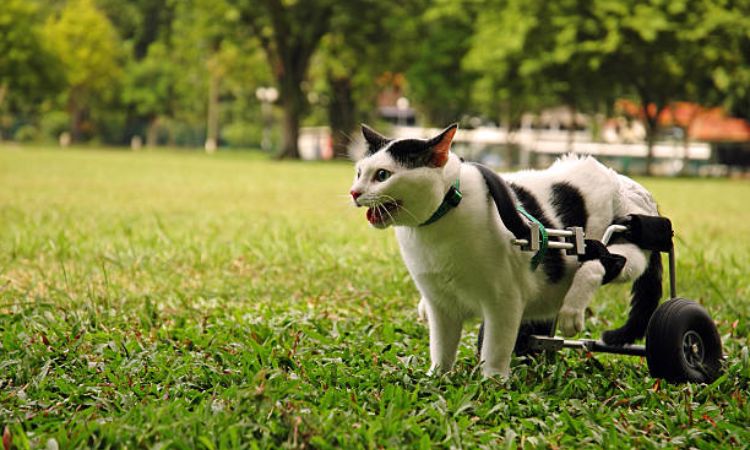
Temporary hind leg paralysis in cats home treatment
1. Keep Your Cat Calm and Restrained
Cats with sudden leg paralysis often panic, which increases the risk of further injury.
- Place your cat in a quiet, dimly lit room away from other pets and household noise.
- Use a padded crate or a soft bed to limit unnecessary movement.
- Avoid forcing your cat to walk, jump, or climb, as this can worsen spinal, nerve, or circulatory issues.
2. Provide a Comfortable Resting Environment
A cat unable to use its hind legs may struggle with discomfort. Proper bedding and positioning are crucial.
- Offer soft blankets or orthopedic bedding to cushion pressure points.
- Keep your cat warm but not overheated; use light blankets, but avoid heating pads or hot water bottles that may burn insensitive limbs.
- If the cat cannot turn on its own, gently change its position every 3–4 hours to prevent pressure sores and improve circulation.
3. Assist with Limited Mobility
Some cats with partial paralysis may still attempt to move.
- Use a towel sling or rear support harness to help your cat stand or move short distances safely.
- Keep food, water, and litter within easy reach to minimize exertion.
- Block access to stairs, slippery floors, or furniture that could cause accidents.
4. Litter Box and Hygiene Care
Paralyzed cats often struggle with toileting. Without assistance, they can quickly develop infections or skin problems.
- Provide a low-sided litter box for easy access.
- If your cat cannot reach the box, line their bedding with absorbent pads.
- Clean urine and stool promptly using pet-safe wipes or damp cloths to prevent urine scald and bacterial infections.
- For cats with full incontinence, gently clean the genital area several times a day.
5. Support Nutrition and Hydration
Weak or paralyzed cats may lose interest in food and water, which worsens their condition.
- Place bowls of fresh water and easily digestible food (such as wet food) close to your cat’s resting space.
- Hand-feeding small amounts may encourage appetite.
- If your cat refuses food or water for more than 12–24 hours, this is an emergency and requires veterinary attention.
6. Monitor Symptoms Closely
Tracking changes in your cat’s condition is critical for determining urgency. Watch for:
- Cold hind legs or paw pads → possible blood clot (saddle thrombus).
- Sudden collapse or inability to bear weight → potential spinal injury or neurological issue.
- Pain signs such as crying, panting, or biting when touched.
- Loss of bladder/bowel control → possible nerve damage or spinal involvement.
- Heavy or labored breathing → may indicate heart disease or shock.
- Refusal to eat, drink, or interact → signs of distress or worsening illness.
If any of these symptoms progress, seek veterinary help immediately.
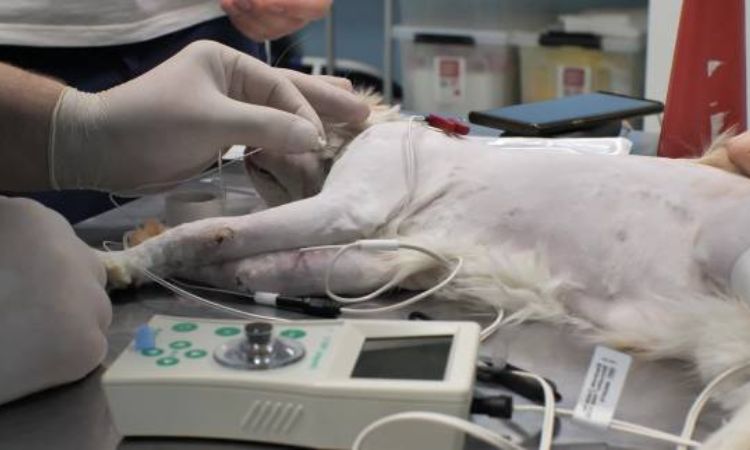
7. Avoid Unsafe Home Remedies
Never attempt unverified or human-based treatments.
- Do not give human painkillers, sedatives, or essential oils—many are toxic to cats.
- Do not attempt spinal adjustments or aggressive massage.
- Only provide medications prescribed by a veterinarian.
Important Note: Home care for temporary hind leg paralysis is only supportive. Many causes—such as blood clots, spinal cord trauma, or neurological disorders—are life-threatening and require urgent veterinary diagnosis and treatment. Cats may appear to improve temporarily, but without medical intervention, the condition often worsens.
Temporary hind leg paralysis in cats is a serious condition that should never be ignored. By recognizing the symptoms early, understanding the possible causes, and seeking prompt veterinary care, you give your cat the best chance of recovery. While some cases may be managed with home support, only a veterinarian can determine the underlying issue and provide the right treatment. Staying informed and acting quickly can make all the difference in your cat’s comfort and long-term health.


